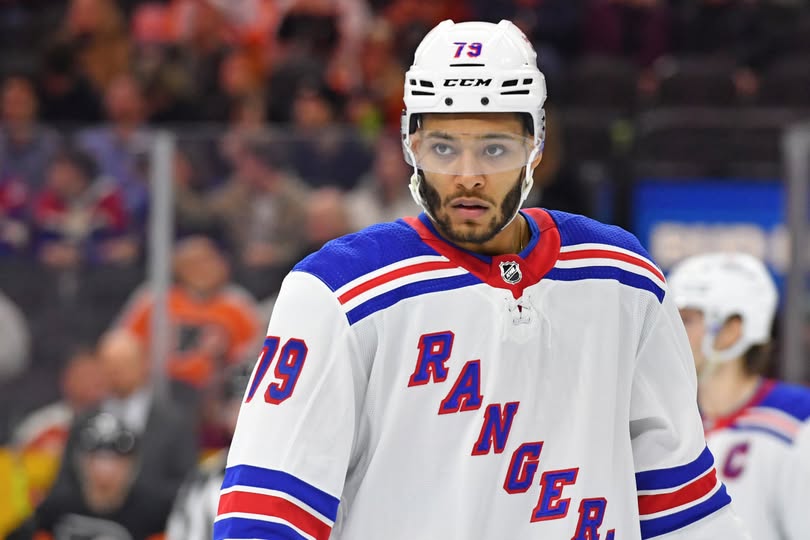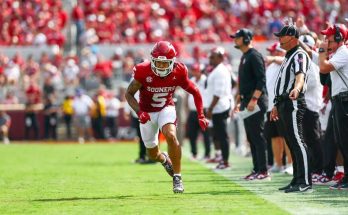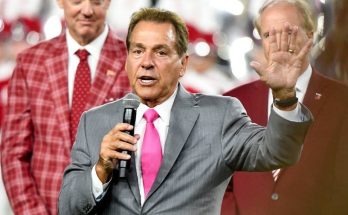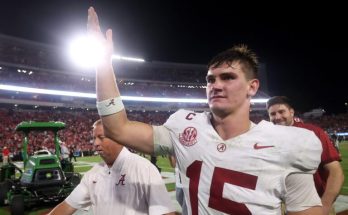“It Shouldn’t Have Come to This” — Rangers, K’Andre Miller Reach Breaking Point in Contract Standoff as Trade Becomes Only Way Out
The New York Rangers and K’Andre Miller have reached an impasse that has left the hockey world buzzing with speculation. What started as a promising partnership between a talented young defenseman and a storied franchise has deteriorated into a contract standoff that neither side wanted but both now seem resigned to. The once-bright future of Miller as a cornerstone on the Rangers blue line now looks increasingly uncertain, with a trade appearing to be the only viable path forward.
For years, the Rangers have been carefully building a team around youth, speed, and skill, attempting to balance their storied history with a modern style of play. K’Andre Miller, a towering defenseman with impressive mobility and a physical edge, was seen as a key piece in this puzzle. Drafted 17th overall in the 2018 NHL Entry Draft, Miller quickly emerged as one of the most promising defensive prospects in the league. His blend of size, skating ability, and tenacity promised a future as a top-pairing defenseman for New York.
From the beginning, expectations were high. Miller’s rookie season showcased flashes of brilliance — moments where his combination of speed and physicality disrupted opposing offenses and energized Rangers fans. Yet, as with many young players, the transition to the NHL was not seamless. Miller’s play was occasionally inconsistent, and critics questioned his decision-making and maturity on the ice. Still, the Rangers remained patient, knowing that young defensemen often take time to develop.
The foundation of their relationship, however, has been shaken not by on-ice issues but by contract negotiations. As Miller approached the end of his entry-level deal, both sides entered discussions to establish the next phase of their partnership. For Miller and his camp, the goal was to secure a contract that reflected his growing role and potential. For the Rangers’ front office, the challenge was balancing salary cap constraints with the need to retain a promising but still developing player.
Negotiations began cordially enough, but over time, tensions grew. Miller’s representatives sought a deal that would put him on the higher end of the team’s defensive salary scale, emphasizing his role on the ice and his importance to the team’s future. The Rangers, juggling a tight cap situation and needing to allocate funds across a roster filled with high-priced veterans and other young stars, pushed back. The gap between the two sides widened, fueled by differing evaluations of Miller’s current value and projected trajectory.
The standoff dragged on through the summer and into training camp, creating an awkward atmosphere for both parties. Miller’s focus on the ice seemed affected by the ongoing contract drama. Meanwhile, the Rangers’ management faced pressure from fans and media to resolve the issue swiftly, mindful that prolonged discord could damage the team’s chemistry and reputation.
Despite efforts to bridge the gap, the impasse grew more entrenched. The Rangers appeared unwilling to meet Miller’s contract demands, citing concerns over commitment to other players and the necessity of cap flexibility. Miller, on the other hand, stood firm, unwilling to accept a deal that he felt undervalued his contributions and future potential.
The breaking point came when both sides realized that a mutually agreeable contract extension was unlikely. Rumors began circulating that the Rangers were exploring trade options, seeking to extract value from Miller before his rights potentially expired or his relationship with the team deteriorated further. Miller’s camp, too, seemed open to exploring new opportunities if a long-term agreement with New York was not forthcoming.
The potential trade scenario has sparked considerable debate. Some analysts argue that trading Miller would be a mistake, depriving the Rangers of a young, physical defenseman who could be a cornerstone for years. Others suggest that if a fair contract cannot be negotiated, the team must act pragmatically to avoid lingering distractions and recoup assets in return.
From Miller’s perspective, the situation is equally complex. The desire for financial security and recognition is natural for a player entering the prime years of his career. Yet being traded away from a team that drafted and developed him could feel like a personal setback. Still, the prospect of a fresh start with a new organization—one potentially more willing to invest in his growth and role—might appeal to Miller.
For Rangers fans, this unfolding saga is bittersweet. The team has been on an upward trajectory, blending veteran leadership with exciting youth talent, and Miller was a symbol of that future. Watching the relationship unravel over contract disputes feels like a missed opportunity and a disruption to the team’s momentum.
The Rangers’ front office now faces a critical test of their ability to manage roster construction and salary cap realities without alienating key players. The NHL’s economic landscape, characterized by flat salary caps and increased player empowerment, makes contract negotiations more delicate than ever. Teams must balance fairness, competitiveness, and financial prudence, often walking a razor’s edge.
In the meantime, Miller’s development continues in limbo. Extended contract disputes can stunt a player’s growth and focus, particularly one still striving to solidify his NHL identity. The next few weeks will be crucial in determining whether Miller remains in New York or is moved elsewhere, and how this will impact his trajectory and the Rangers’ season.
If a trade does occur, the Rangers will need to find suitable compensation to fill the void Miller leaves. Replacing a young defenseman with Miller’s unique blend of size and skating is no easy task. Moreover, such a trade sends a message to other young players in the organization about the team’s priorities and negotiating stance.
On the flip side, the acquiring team stands to gain a physically imposing, mobile defenseman entering his prime years, potentially at a reasonable cost if the Rangers seek a quick deal. This could be a savvy acquisition for a team needing to bolster its defensive core with youth and upside.
Ultimately, this situation is a cautionary tale about the challenges of managing young talent in the NHL. The transition from prospect to established player is rarely linear or smooth, and contract negotiations can either cement a relationship or fracture it irreparably. For the Rangers and K’Andre Miller, it appears they have reached a crossroads where the path forward requires difficult decisions.
“It shouldn’t have come to this,” is a sentiment echoed by many within the Rangers organization and among the fanbase. The hope is that whatever the outcome, both the team and Miller can move on positively—whether that means a new deal and renewed partnership or parting ways with mutual respect.
As the NHL season looms, all eyes will be on the Rangers and Miller to see if a resolution can be found or if a trade is inevitable. Regardless of the outcome, this episode underscores the complexities of player development, contract negotiations, and team-building in modern professional hockey. The story is far from over, but the stakes have never been higher for everyone involved.



